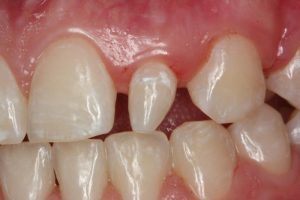Hello,
I recently broke one of my crowns. I wanted to get it replaced ASAP, so I opted for a same-day CEREC crown.
My new CEREC dental crown feels too thick and doesn’t fit right. Even after my dentist filed it down, it still isn’t fitting properly. None of my other crowns ever felt like this. I don’t think it’s going to get any better. I thought CEREC was the way to go, but now I’m regretting getting one. Is my crown salvageable? Or should I scrap it?
Thank you,
-Adrian, Tallahassee, Florida
Hi Adrian,
Thank you for your message. Unfortunately, it sounds like your dentist just wasn’t that comfortable using the CEREC software; if they had been, your problem would have been avoided. CEREC crowns are made using a high-tech machine. This machine’s software scans the tooth before milling the crown from ceramic. The result is a strong, long-lasting ceramic crown, so it’s disappointing to hear you had such a bad experience.
Even without using your previous crown or original tooth as a baseline, your dentist should have been able to properly guide the machine to create a crown contoured to your gums. If the crown doesn’t fit right at the gum line, food can get trapped underneath it, and that can lead to gum disease.
Crowns are designed to fit so seamlessly in your gums that you would not notice them. Ill-fitting crowns can cause you to bite your lip, cheeks, or tongue, especially while you sleep. Aside from being painful and annoying, this biting and chewing could lead to the growth of a tumor.
I’m glad you tried to take care of this problem, as it can become more serious.
However, now that the crown is cemented in your mouth, it is likely too late to salvage it. Your best bet is to ask your dentist to remove the crown. If you want another CEREC crown, find a more experienced cosmetic dentist. Otherwise, have your dentist send the crown to a dental lab to be remade. A new, properly-fitting crown will feel so much better than what you have now.
What is CEREC Technology?
CEREC technology allows dentists to create ceramic crowns on-site, eliminating the need for multiple appointments and temporary crowns. The process involves digital impressions, CAD/CAM technology, and the milling of a ceramic block to produce a customized crown that matches the natural teeth in both form and function.
Dental Crown Too Thick? Common Reasons Your CEREC Crown Feels Off:
- Fit and Occlusion Issues:
A well-fitted CEREC crown should seamlessly blend with the adjacent teeth, both in terms of alignment and bite (occlusion). If there are discrepancies in the fit or how your teeth come together, it can result in discomfort.
- Improper Bite Alignment:
Occlusal adjustments may be necessary to ensure that your bite is correctly aligned. Misalignments can lead to discomfort when chewing or biting down.
- Sensitivity:
Some initial sensitivity is normal after crown placement, but persistent discomfort, especially when consuming hot or cold substances, may indicate an issue with the crown or the underlying tooth.
- Inadequate Polishing:
If the CEREC crown’s surface is not adequately polished, it may feel rough against the tongue and cheek, irritating.
- Underlying Tooth Issues:
Discomfort may stem from problems with the tooth underneath the crown, such as decay or infection. It’s essential to rule out any issues with the tooth itself.
Steps to Take When Your CEREC Crown Doesn’t Feel Right:
- Contact Your Dentist:
If you experience discomfort or feel that your CEREC crown doesn’t fit properly, contact your dentist immediately. Early intervention is crucial in addressing any issues and ensuring your comfort.
- Professional Evaluation:
Your dentist will conduct a thorough examination, including assessing the fit, bite, and overall condition of the CEREC crown. X-rays may be taken to examine the underlying tooth.
- Occlusal Adjustment:
If the discomfort is related to your bite, your dentist may perform an occlusal adjustment to ensure that the crown aligns correctly with the opposing teeth.
- Polishing or Refinishing:
Roughness on the crown’s surface can often be addressed through polishing or refinishing to enhance comfort and prevent irritation.
- Addressing Underlying Issues:
If there are underlying issues with the tooth, such as decay or infection, appropriate treatments will be recommended to resolve the problem before addressing the crown.
Preventing Future Discomfort:
Regular Check-ups:
Attend regular dental check-ups to monitor the condition of your CEREC crown and address any emerging issues promptly.
Good Oral Hygiene:
Maintain excellent oral hygiene to prevent decay around the crown. Regular brushing, flossing, and dental cleanings are crucial for the health of your teeth and restorations.
Communication with Your Dentist:
Openly communicate any concerns or changes in how your CEREC crown feels during and after the adjustment process. Your dentist can make further refinements as needed.
Conclusion: Restoring Comfort and Function
Discomfort with a CEREC crown is not something to endure silently. Prompt communication with your dentist, a thorough evaluation, and necessary adjustments can help restore both comfort and functionality. CEREC crowns are designed to provide a seamless and comfortable fit, and any deviations from this should be promptly addressed to ensure your ongoing satisfaction with your dental restoration.








